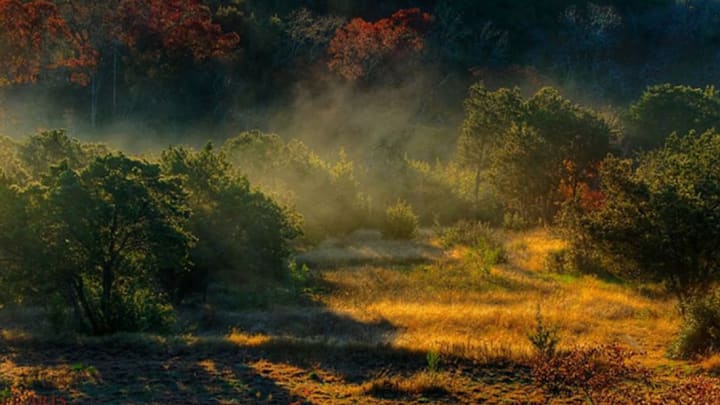The mountain cedar has been called “Texas’s Most Hated Tree” and “Mother Nature’s hazing ritual just for Texans.” Found throughout Central Texas in canyons, steep-sided dry gullies, and limestone outcrops, the mountain cedar (Juniperus ashei) is famous for shedding clouds of pollen each winter, causing terrible allergies for people in the surrounding area.
The trees, also called Ashe junipers, are native to the region and an important part of the biome. Its fallen leaves create exceptionally rich and well-draining soil that supports endemic plants like cedar sage and Texas madrone. The tree provides food and homes for the larvae of juniper hairstreak and olive butterflies. The rare golden-cheeked warbler is believed to create its nests almost exclusively from Ashe juniper bark. However, all these ecosystem services are not enough to convince some Texans to leave the trees alone.
Some of the state’s allergy sufferers hate the trees so much that they’d like to eradicate them. According to testimony before the Texas House of Representatives’ Agriculture and Livestock Committee in 2012, mountain cedars don't just wreak havoc on allergies: They also pull gallons of much-needed water from Texas soil and even cause wildfires due to the resins in their wood. Some believe that, in addition to causing watery eyes and sniffly noses, the trees pose a genuine environmental threat. (Others have argued that the native junipers have evolved to be drought-tolerant, and while they do tend to be more flammable than other trees—especially in drought conditions—they don’t spontaneously combust.)
Despite protests, the least popular tree in Texas seems to be sticking around for now. And though they may be trouble for Texan allergy-sufferers, the amount of pollen they produce is undeniably impressive. Watch as mountain cedars release huge clouds of pollen (assisted by a strong shake) in the videos below, and just try not to sneeze.
Read More Stories About Nature:
A version of this story was originally published in 2016 and has been updated for 2024.
